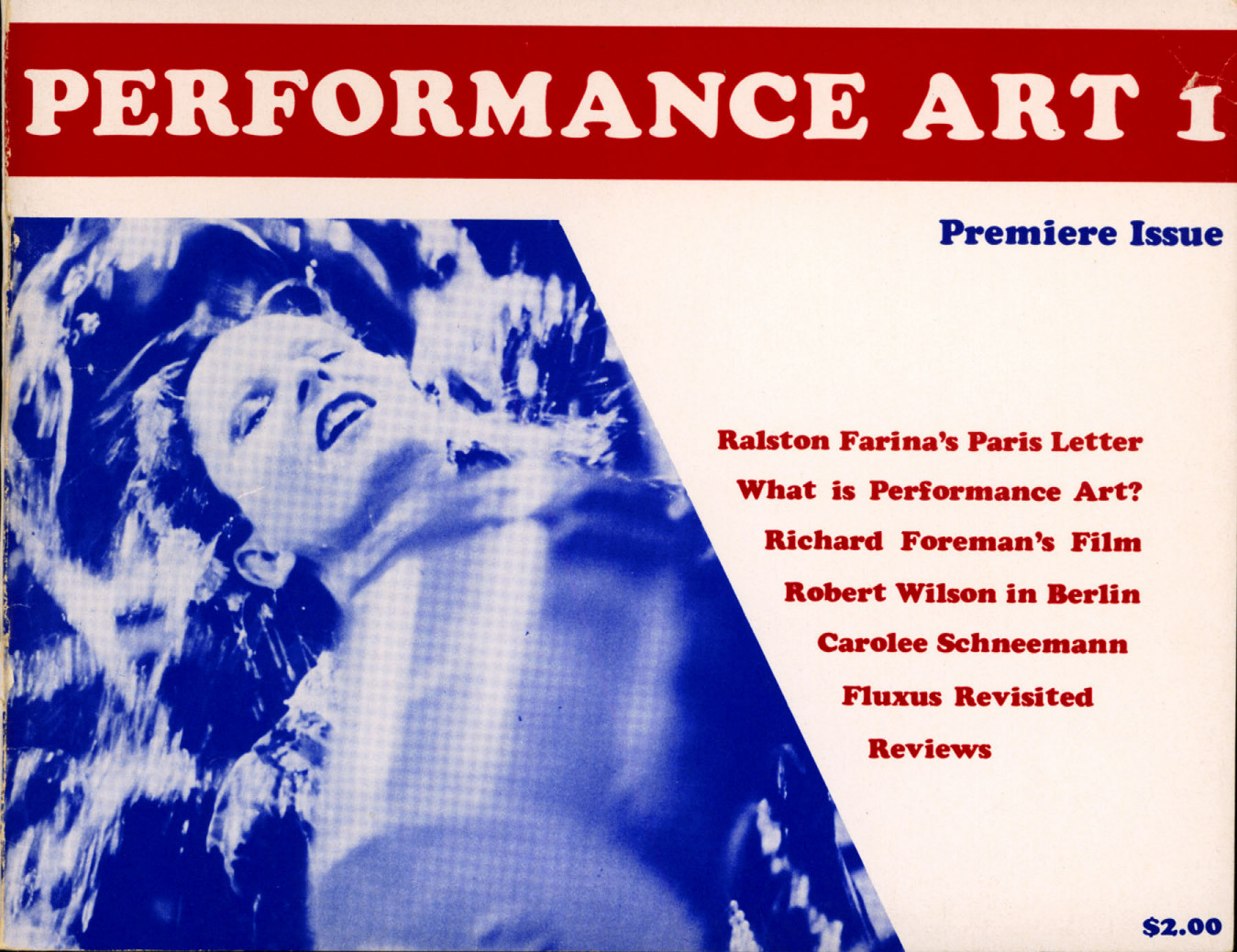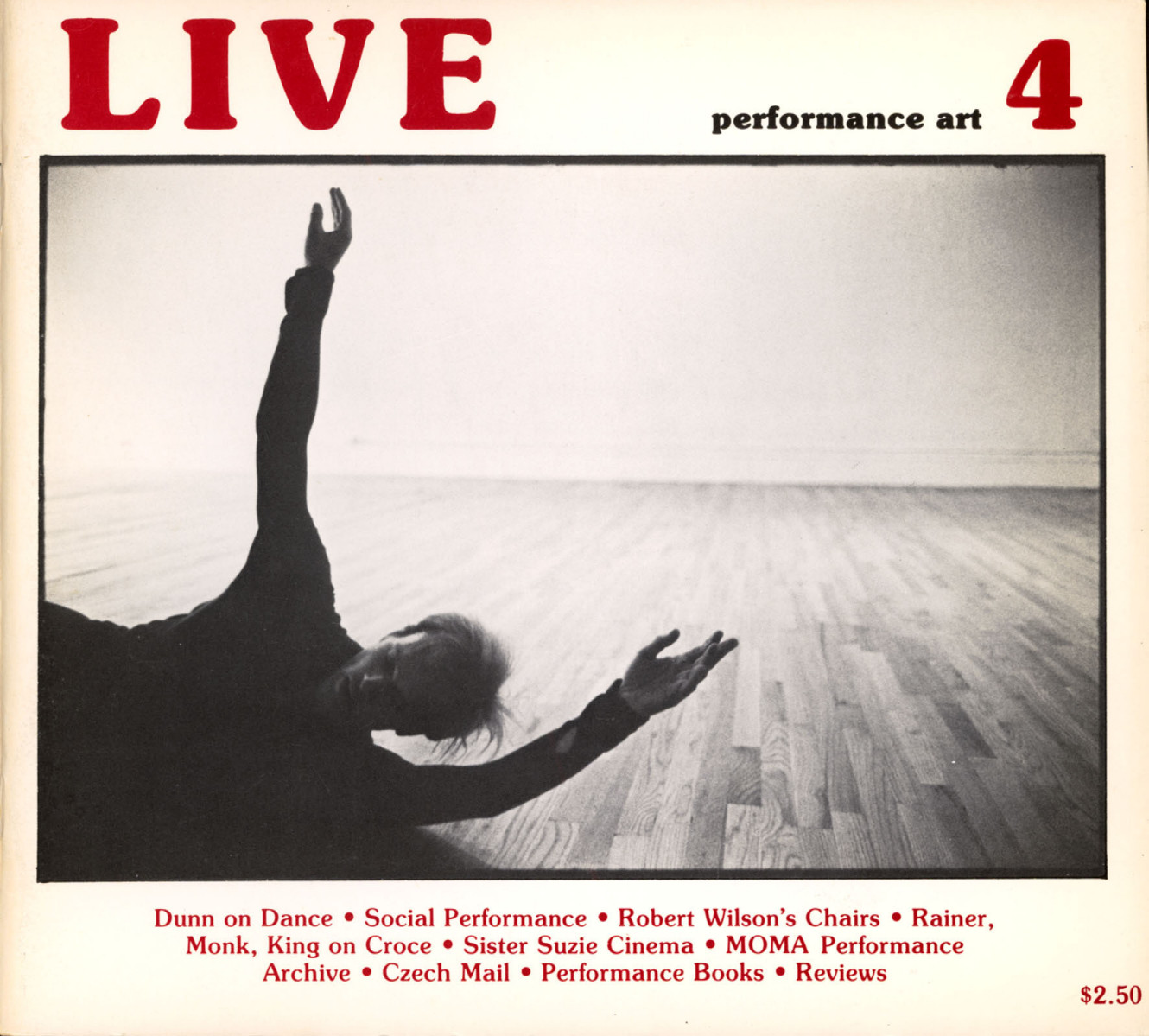Sally Banes: Greenwich Village 1963: Avant-Garde Performance and the Effervescent Body (1993)
Filed under book | Tags: · 1960s, art history, avant-garde, dance, fluxus, happening, new york, performance, performance art

“The year was 1963 and from Birmingham to Washington, D.C., from Vietnam to the Kremlin to the Berlin Wall, the world was in the throes of political upheaval and historic change. But that same year, in New York’s Greenwich Village, another kind of history and a different sort of politics were being made. This was a political history that had nothing to do with states or governments or armies–and had everything to do with art. And this is the story that Sally Banes tells, a year in the life of American culture, a year that would change American life and culture forever. It was in 1963, as Banes’s book shows us, that the Sixties really began.
Banes draws a vibrant portrait of the artists and performers who gave the 1963 Village its exhilarating force, the avant-garde whose interweaving of public and private life, work and play, art and ordinary experience, began a wholesale reworking of the social and cultural fabric of America. Among these young artists were many who went on to become acknowledged masters in their fields, including Andy Warhol, John Cage, Yoko Ono, Yvonne Rainer, Lanford Wilson, Sam Shepard, Brian de Palma, Harvey Keitel, Kate Millet, and Claes Oldenburg. In live performance–Off-Off Broadway theater, Happenings, Fluxus, and dance–as well as in Pop Art and underground film, we see this generation of artists laying the groundwork for the explosion of the counterculture in the late 1960s and the emergence of postmodernism in the 1970s. Exploring themes of community, freedom, equality, the body, and the absolute, Banes shows us how the Sixties artists, though shaped by a culture of hope and optimism, helped to galvanize a culture of criticism and change. As 1963 came to define the Sixties, so this vivid account of the year will redefine a crucial generation in recent American history.”
Publisher Duke University Press, 1993
ISBN 082231357X, 9780822313571
ix+308 pages
Reviews: Serge Guilbaut (Am Hist Rev, 1995), Marla Carlson (Theatre J, 1996), PublishersWeekly (n.d.).
PDF (100 MB, no OCR)
Comment (0)Thurston Moore, Byron Coley: No Wave: Post-Punk, Underground, New York, 1976-1980 (2008)
Filed under book | Tags: · 1970s, music, music history, new wave, new york, no wave, photography, punk

“A visual chronicle of the collision of art and punk in the New York underground of 1976 to 1980. This look at punk rock, new wave, experimental music, and the avant-garde art movement of the 1970s and 1980s focuses on the architects of No Wave from James Chance to Lydia Lunch to Glenn Branca, as well as the luminaries that intersected the scene, such as David Byrne, Debbie Harry, Brian Eno, Iggy Pop, and Richard Hell.
This rarely documented scene was the creative stomping ground of young artists and filmmakers from Jean-Michel Basquiat to Jim Jarmusch as well as the musical genesis for the post-punk explosions of Sonic Youth. Thurston Moore and Byron Coley have selected 150 images and compiled personal interviews to create an oral history of the movement.”
Publisher Abrams Image, New York, 2008
ISBN 9780810995437, 0810995433
143 pages
PDF (65 MB, no OCR)
Comment (0)Performance Art / LIVE, 1-7 (1979-1982)
Filed under magazine | Tags: · art, dance, intermedia art, live art, new york, performance, performance art



The late 1970s in New York City generated a lively scene in experimental theatre, performance, dance, music, sound, video, film, clubs, and festivals. Numerous alternative spaces were opened up and publications started. The seven numbers of the zine-style magazine Performance Art (then retitled LIVE) devoted to downtown performance discuss topics such as acting/non-acting, intermedia, comedy, solo performance, new wave rock, what is performance art?, gay and feminist performance, punk, and new dance.
Edited by Bonnie Marranca and John Howell
Publisher Performing Arts Journal (Bonnie Marranca and Gautam Dasgupta)
47 pages (numbers 1-5), 120 pages (number 6)
Number 1, 1979 (13 MB)
Number 2, 1979 (11 MB)
Number 3, 1979 (14 MB)
Number 4, 1980 (14 MB)
Number 5, 1981 (16 MB)
Number 6-7, 1982 (42 MB)

